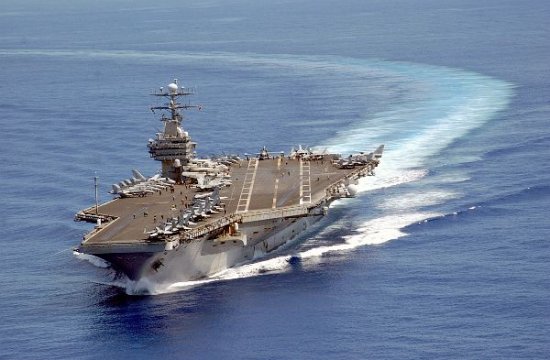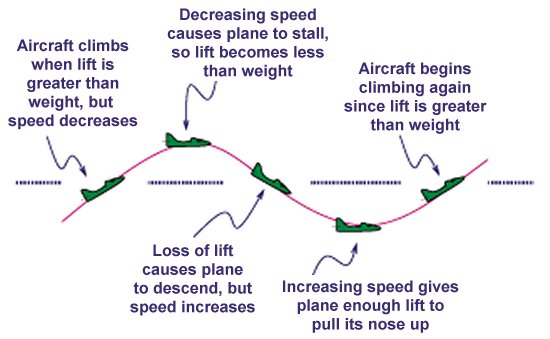|
||||||||||
|
|
||||||||||
|
||||||||||
|
|
||||||||||

This equation tells us that lift (L) is proportional to the square of the speed or velocity (V) of the vehicle through the air. Let's think about a simple example and say that the speed of a glider flying straight and level through still air is 10 ft/s. Now let us say that the glider experiences a tailwind, which is a wind blowing in the direction of travel from behind the glider. We will assume this tailwind has a speed of 2 ft/s. This tailwind reduces the speed of the glider relative to the air from 10 to 8 ft/s. As a result, the lift produced by the glider's wing will decrease.
Conversely, if the glider were to fly into a headwind of 2 ft/s, its speed relative to the air would be increased to 12 ft/s. This increase in the wind speed over the wing will increase lift, assuming all other variables like angle of attack remain constant.

It is because of this effect of wind on lift that an aircraft carrier will turn into the wind and go to top speed when planes are being launched or landed. This motion increases the headwind over the deck increasing the lift on a plane's wings and helping it to takeoff or land in less distance.
Porpoising is a common name for a condition when an aircraft cannot maintain a steady or level flight path. This behavior is also related to lift and its dependence on speed as well as angle of attack. Lift tends to increase with angle of attack until a point called the stall angle is reached. At this angle, the airflow separates from the surface of the wing and the lift rapidly decreases. As the speed of the glider relative to the air decreases in a tailwind, the glider will try to increase its angle of attack to compensate for the loss in lift. This increasing angle of attack increases the lift coefficient (CL) that in turn increases lift as described by the equation introduced earlier. In other words, as velocity goes down, angle of attack needs to go up to keep the lift the same.

However, the angle of attack eventually reaches the stall angle where lift no longer increases but starts to drop off. When this occurs, the glider nose dives because it no longer has enough lift to remain level. However, a dive increases the glider's speed, so lift again increases and the glider can start to climb. This tradeoff between speed and altitude is a classic aerodynamic phenomenon that has a special name called a phugoid.
A phugoid is often created purposefully when a pilot rapidly pitches a plane's nose up or down and then takes his
hands off the controls. The plane will naturally continue this oscillation with altitude increasing but speed
decreasing and altitude decreasing but speed increasing. If the plane is designed properly, the magnitude of this
oscillation should damp out over time and the plane will eventually return to flying straight and level. A plane
exhibiting this behavior is considered longitudinally stable.
- answer by Jeff Scott, 19 June 2005
Read More Articles:


|
Aircraft | Design | Ask Us | Shop | Search |

|
|
| About Us | Contact Us | Copyright © 1997-2023 | |||
|
|
|||